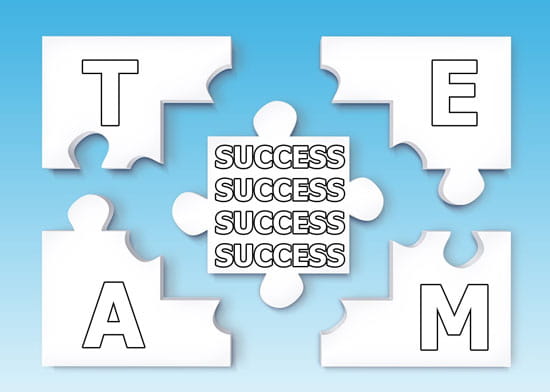Internal Negotiations: Supporting the External Deal

The author discusses how internal negotiation skills can increase the ability of external negotiations to enhance overall business value.
Considerable effort is given to negotiation training and preparation by negotiators in their external negotiation interactions with clients, suppliers, partner and competitors. We have seen from our experience from training B2B salespeople, account managers, and regulatory team members, just how often their internal negotiations positively or negatively impact external negotiated agreements. All too frequently the internal negotiations are not given their just dues because the external agreement receives the majority of a negotiator’s attention.
The primary focus of successful negotiation, and in training negotiators, is to attain additional value in the creation of enhanced agreements during the negotiation process. Organisations, management and individuals must realize just how valuable their internal negotiation skills can increase the ability of external negotiations to enhance overall business value.
We provide consulting services and assist our clients in managing challenging negotiations with prospective partners, regulatory agencies, and business competitors. We have concluded from our observations that for external negotiations to be effective you must create and nurture internal alignment support and resources. Those who participate in our negotiation training programs consistently evaluate their internal negotiations as more of a challenge than their external negotiations. Subjective evidence suggests this trend is increasing in today’s fast paced and changing marketplace.
Three primary features of successful internal negotiations are highlighted in this article:
- There are predictable outcomes to ineffective internal negotiations. These pitfalls can be avoided through effective internal negotiation.
- Both internal and external negotiations share several vital characteristics.
- There are specific strategies for internal negotiations to generate the creation of the alignment, resources and support for successful external negotiations.
Why are internal negotiations so important?
If internally negotiated support and alignment is lacking:
- Resources will not be readily available. In your organization, how many sales reps conclude an ambitious deal for a client and neglect to check internal capacity first? For example, an IT salesperson returns to corporate office and declares they have made a deal to supply customized hardware to a regional buyer only to discover, We won’t have the capacity to customize that equipment for at least 4 months. Who has to bear the burden of the resource shortfall?
- Implementing the deal will falter. When you’ve prepared for your external negotiation, you can succeed in getting your client to clearly identify their need. Both you and the client may devise a fantastic solution that incorporates your capacity. After the contract is signed however, what is the likelihood that three of your manufacturing operations will simultaneously develop new templates for your client? What sense of urgency will the line managers adopt because they have not been consulted in the process? Will the agreement you manufactured in the client’s board room be the best solution on the shop floor?
- Resistance and the threat of sabotage increase. Would any account manager want to announce that in order to reduce costs in a new deal with a key provider, they have promised to match the provider’s paperwork — a set of triplicate documents run on unfamiliar software? What will be the consequences of your billing department’s unwillingness to change? Who will have to shoulder this problem?
- Negotiation Team members are not likely to speak with a unified voice. Where individual priorities of a regulatory negotiating team have not been aligned with a federal regulatory body prior to sitting down, what is the likelihood the team will speak with a unified voice? Will the strategic objective for the product be clear among competing individual and functional concerns? What are the odds of persuading regulators of your product’s intrinsic value and adherence to their standards?
- If it isn’t done right, you risk alienating your internal support base. You need them. No one does a deal solo. A deal requires teamwork, solid team planning, and consistent communication. An independent account manager who operates solo may be successful for a while, but even a successful independent needs support when the going gets tough. Who wants to be the one begging for assistance after having spent so much time spurning the home base?
Each of these hazards can be side-stepped if the attention and techniques of successful external negotiations are proactively applied to internal negotiations as well. You can enjoin simple project planning techniques with ongoing internal negotiation to keep your internal support people informed. Provide them with a summary of the deal, your estimation of the people who should be included, what appropriate resources you require and a timetable. Perform an introductory meeting to familiarize people with each other and develop early buy-in. Create a simple Gantt chart; update the chart to illustrate progress, early wins and how people are reacting to the overall progress. Every step of the way can be negotiated. This will generate your internal momentum.
Which people need to focus on internal negotiations?
Any person whose external agreements necessitates internal support for implementation must give equal focus to internal negotiations as to external ones.
- Business development personnel who must execute corporate strategy with sales channels and their strategic alliance partners;
- Sales, customer service and contract negotiators who are the primary focal points of contact for client, supplier and provider relations;
- Account managers whose key accounts create and generate significant revenue and thus impact internal resource allocation;
- Principal negotiation team leaders, especially those who are engaged in cross-functional negotiating teams and are interacting with external partners or competitors.
How are internal and external negotiations similar?
Internal and external negotiations are intricate, multi-party deals. Both negotiation types entail tangible resources such as time, money and people, and intangible resources such as trust, honesty and reputation. In addition, both involve complex working relationships that are perpetually evolving. Externally, yesterday’s competitors may be viewed as today’s customers. Tomorrow they may become partners. Internally, working relationships are just as interconnected, especially as cross-functional organizations supplant conventional, silo-based corporate structures. Yesterday’s turf-conscious manager could turn into tomorrow’s critical project ally.
Frequently, even if the external supplier or partner remains staid, the point of contact – your negotiating counterpart – changes. However, this person often climbs upward in their organization. This enhances the value of a well-developed relationship. Similarly, internal negotiations almost always include ongoing relationships.
Premised in part on this intricate relationship, successful negotiators mustn’t perceive the world with a win-lose negotiation mentality. The web of relationships necessitates conventional, adversarial negotiation be substituted with interest-based or principled negotiation”. Negotiators must determine whose interests must be met for a deal to be successful, value-generating and long lasting. External negotiations need rapid, informed decisions, which in turn must have proactive internal negotiating so interests are transparent. Account managers can’t afford to just consider the desires of the client; they must balance those desires with internal interests. What if the client is pleased but you are not?
Organizations must take a win-win approach both externally and internally to increase and prolong value. Biotech scientists, for example, can assist their business development colleagues expand the pie by identifying definite strategic areas for corporate partnering. A cross-functional team negotiating with a prospective partner can involve the team from a start-up by outlining the many benefits to the partnership. In the process they can include the internal scientists’ interest and resources to devote to the project. The internal and external negotiations in this scenario should mirror one another to optimize their appeal.
What are the vital strategies for negotiating internally?
The most significant strategy for effective internal negotiations is to communicate, communicate, communicate. Your objective should be to:
- Engage internal partners in joint problem solving, and to assist you in preparing for external negotiations
- Avoid having to surprise internal partners with external negotiation outcomes.
- Create rapport and foster internal working relationships that will be required to buttress your external deal.
Greater communication will get more people will be involved and invested in your success. Communication fosters relationships through consistency. Consistency pays off. When you require something extraordinary, people will obtain what you need and offer their support if they trust you and understand your motives.
To achieve this effectively, you must first identify the primary internal parties. Ask yourself:
- Establish which individuals would be interested in this deal and determine and identify who will be impacted.
- Establish anyone who might harm or negate the deal.
- Identify who will give the support necessary to achieve these objectives.
- Consider and identify those parties who might become your best ally/coach/sponsor?
Several other vital strategic questions to answer include:
What is the desired time-line for internal review and approval? How will this match up with the client’s time-line in reaching a decision? Chart your way backward from the ultimate decision and plan your internal negotiations accordingly. Internal negotiations entail knowing who needs to be available; whose buy-in you require and what must happen to get the product out the door.
To know this, you also need to know what needs to be customized. Check internally before making any promises to a client. The last thing you need is a client who is excited for a product that satisfies their requirements perfectly but cannot be developed and delivered. When you have engaged the support of your internal partners, remember to ask them who else should be included in your planning for the external deal. The more intricate the deal, the more intricate your web of internal support must be.
What specific steps can you take to effectively negotiate inside out?
The following internal negotiation approaches will aid you in developing the support you need to follow through on your deals.
-
Understand the interests of your internal partners and acknowledge potential political ramifications of your solution.
Carefully consider all the factors involved in the deal. This should include potential options for external agreement, and from all pertinent internal viewpoints. Place yourself in their shoes. What are their interests? What concerns them and what do they need? Thinking about the external deal from internal perspectives is the first step of a negotiation strategy. It is vital to know when you are working across silos, and to recognize the consequences of doing so.This communication could sound like:
- A good approach: As I see it, I think we need to do these.
- A better approach: What is your viewpoint about this situation?
- The best approach: This is how I believe you might be affected by this, and what I identify as your needs and concerns. Have I understood and analysed the situation correctly? Am I missing anything?
-
Communicate and develop relationships.
As you will want to offer solutions to your customer, you also want to offer solutions to your internal network. Ask yourself what is the best way to guarantee that your solution fits. Ask questions. Consistent intent and action on your part enhances your reputation for honesty and integrity and because you took this approach, people will support you. Make your intent obvious and ensure you have no hidden agendas! With this approach you will be able to control the impact of your internal negotiations. By sharing information in this manner you gain internal influence, the currency of decision-making.
- A good approach: What can you do to help me to lock deal this deal in and make it happen?
- A better approach: We’re going to have to interact together to make this deal become a reality. Here’s what I require from you. How does this mesh with your negotiation agenda and priorities?
- The best approach: I believe this deal has real possibilities and is going to become a reality. What impact might this have on you? Have you had any experience with situations like this in your previous dealings? What would you prefer to see from this supplier? Is there any thing else I can do to meet your needs as the deal evolves?
Communication must always be ongoing. Building support only in initial stages is not sufficient in itself. Internal relationships must be perpetually nurtured through ongoing communication as the deal with your external partner evolves. Negotiations take time and are always dynamic. Remember never to unexpectedly surprise your internal allies.
-
Co-create options and help quantify the benefits and costs both to your company and the customer.
What will your internal partners agree to? More importantly, what will they endorse as an outcome of your external deal? You can fuel their enthusiasm with a few satisfactory options. Prepare yourself for pushback on your ideas and additional options you did consider. This is good. Pushback gives you additional clues about the needs and concerns of your internal partners. Their ideas prove the adage that two brains are better than one.
As options are developed internally, you must also quantify the value propositions. Are making assumptions? What methodology will you opt to quantify the outcomes? How will the client quantify the value? In other words, how will you measure success, both organizationally and individually? (e.g. EVA – Economic Value Added – you may not know about it now, but you’d better find out; e.g. return on committed capital). What are the key metrics the organization of individual is being measured on?
It might appear like:
- A good approach: I thinks this is the best option we can put before our customer, and this is what they will ask for in return.
- A better approach: Here are several other alternatives this customer and I have discussed and considered. What is your opinion? Is there anything you would care to add that would complement this deal?
- The best approach: For this customer, what do you believe our options to be? Can you identify which options might offer you the most maneuverability? Can you identify the options we should identify for negotiating and prioritize? How will we gage the success of the deal?
-
Identify criteria your internal partners will employ to evaluate the deal.
What standards will the different internal parties adopt to evaluate the agreement you craft with a supplier? Defect rate? On-time delivery? Volume discounts? It’s not sufficient enough to agree based on an arbitrary standard or, worse yet, We did it this way last time. If you can discover how your internal partners will evaluate your external deal, you greatly enhance your ability to gain their support for implementing it.
While this is occurring, you must clarify your alternatives to any agreement with the outside customer. What is going to be your minimum possible agreement? Don’t get ensnared into becoming the company that couldn’t say No by failing to know your internal awareness of when you would be better off without an agreement at this time. Internal consensus about your BATNA (Best Alternative To a Negotiated Agreement) among your internal support network will prevent you from agreeing to deals both of you will regret in the end. Your task is to guarantee the external relationship is sustained so there can be a Yes in the future, even if the present circumstances doesn’t address your internal criteria.
-
Generate alignment and consensus.
The extent of internal consensus needed for effective implementation of an externally negotiated deal is proportionate to the quantity of people who will be affected by the deal itself. The more you negotiate with your internal partners to promote the deal, the more latitude and authority they will give you to create something externally.
-
Close the internal deal before you present the final agreement to the client.
Make sure everything is documented. Internal alignment and commitment to implement external deals is essential. Presenting a unified front increases the likelihood of the external deal, and offers you a much better opportunity to create more value for your own company and for the other side.
A good negotiator always prepares for their negotiations with clients and counterparts/adversaries. Effective successful negotiators pave the way for successful external negotiations through proactive, deal-focused internal negotiations. There is an intricate connection of internal relationships that must buttress external deals. The consensus created by integrating the interests of your internal partners into your external deals will allow you to generate more value. Then, when the agreement is signed, you will have the resources you require to implement the deal. Your agreement will not be sabotaged, and your internal team will think and act as whole team in your continuing relationships with your customers, suppliers and partners.
Richard Morse is a consultant for ThoughtBridge, a consulting firm that mediates labor-management disputes.
YOU MAY ALSO LIKE










All negotiations are based on internal planning and projection. We can learn different negotiation techniques, attend courses and programmes but all negotiation process needs to be tackled in one`s mind.
Piotr Jednaszewski PhD
This is a great summary to create awareness of how important it is the process of “Internal alignment”; in my experience working in High Tech companies, where you are dealing with experts in any specific subject, there is the wrong assumption that everyone “should get it” and understand the technical merits of a new development or project, but most of the times it is exactly the opposite.